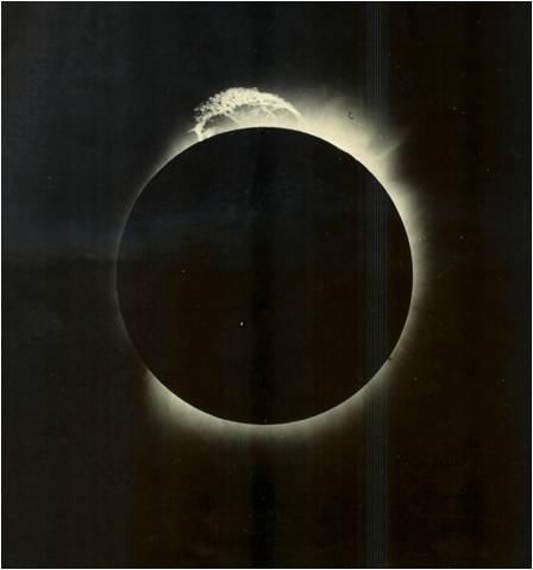Arthur S. Eddington comments on the eclipse of May 29, 1919, six weeks after returning to England.
The days that preceded the eclipse were very foggy. On the morning of May 29 there was a heavy thunderstorm from 10 to 11:30, a rare occurrence at that time of year. The sun appears for a few minutes, but the clouds come back again. About half an hour before the totality, the sun appeared from time to time; and when it was 1h55m PM (GMT) we could see it through a passing cloud. According to our calculations, the totality time should be between 2h.1m and 5s and 2h.18m.7s, that is, the eclipse should last 5m and 2s, and that’s exactly what happened. A few minutes after the totality, the sun appeared in a perfectly clear sky, but this did not last long. It is probable that the disappearance of the clouds was due to the eclipse itself, since we had noticed that the sky only used to lighten at sunset.
It was a wonderful spectacle, and the photographs later revealed a beautiful luminous prominence some 170 km above the surface of the sun. But we did not even have time to observe her. We were simply aware of the strange half-light of the landscape and the silence of nature, broken by the calls of the observers, and the beat of the metronome beating the 302 seconds of the totality (of the eclipse).
Text by Ana Simões e Paulo Crawford
Picture: Courtesy of the Observatório Astronómico de Lisboa
back

